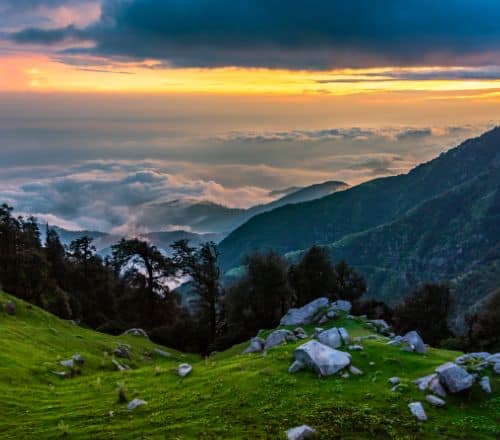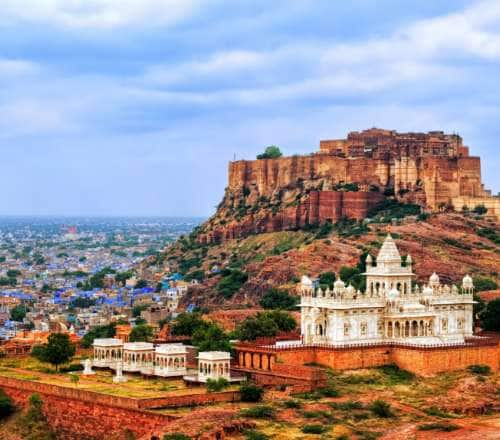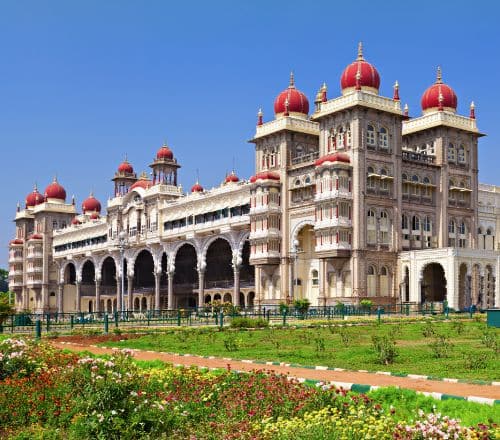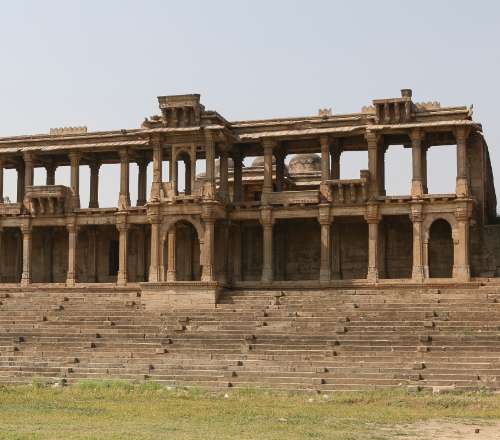Stay logged in to proceed with bookings, orders and offers.
On changing the terminal, you will loose items in your cart. Are you sure you want to change your terminal?
My experience as a media delegate at a state-sponsored tribal dance festival
India is home to many tribes that can trace their origins to prehistoric times. Despite their old roots, we know very little about the tribals' way of life, as they have remained away from the cities and close to nature for a long time.
Yet, it is important to highlight the rich and diverse tribal heritage so we can preserve and protect it. We can also learn a lot from their worldview and traditions. The National Tribal Dance Festival in Chhattisgarh provides the opportunity to not only celebrate tribal dance culture but also to learn about Indian tribes and their lives. The Indian state of Chhattisgarh, which has the country's largest tribal population, started the National Tribal Dance Festival in 2019.
Over the years, the government has elevated this festival to an international level. This large-scale event invites the participation of tribals throughout India and the world. Tribal dance troupes display their talent on the national stage and are recognised for their performances.
I had the privilege to attend the third National Tribal Dance Festival in October 2021. Participating as a media delegate, I spent three days at the festival and enjoyed it thoroughly. I watched dance performances, shopped, got a tribal tattoo, and even visited the chief minister's office!
Read More
Read Less
I landed at Raipur on the event's inauguration day. The festival was being held at the large campus of Science College, Raipur. This venue had different sections dedicated to open dance performances, the inaugural ceremony, conferences, food, and shopping.
The inaugural ceremony began with a colourful and rhythmic parade of all the dance troupes. It was presided over by the chief ministers of Chhattisgarh and Jharkhand who, along with other eminent officials, welcomed everyone to the festival.
They shared the vision of the National Tribal Dance Festival and congratulated all participants, recognising that events like these can help build pride in our roots.
After the ceremony, I began exploring the festival. I soon saw participants from different parts of the world dressed in vivid ethnic clothes. They were preparing for their performances and looked both excited and nervous. No wonder. Winners of the National Tribal Dance Festival were to be rewarded with big cash prizes! I spent some time admiring them and clicking vibrant photographs.
Then I ran because I didn't want to be late for the first conference. The festival held many conferences that invited important people from the travel and hospitality industry.
Some important speakers included Mr Aman Nath, owner of Neemrana Hotels; Mr Manish Mehrotra, owner of the Indian Accent restaurant; and Mr Jamal Shaikh, editor of the Brunch, Hindustan Times. They all shared their views on how to develop tourism in the state.
I left these sessions with an insight into Chhattisgarh's tourism potential – not just for travellers but also for entrepreneurs and potential investors.
I heard my stomach growl during the conferences, so I decided to take a break for lunch. The food stalls provided the perfect answer to my hunger.
The venue had dedicated a huge section to food with over two dozen stalls, many of which offered authentic Chhattisgarhi food. This was my first experience eating delectable tribal food such as phara, khurma, and dal pithi. These are cereal- or lentil-based dishes made using only local produce. Other local dishes included safari, chilla, long latika, muthia, and bara.
To quench my thirst, I took my first-ever sip of mahua. Mahua is the nectar of the buds of a local tree known for its intoxicating quality. This sweet nectar is a popular drink among both humans and animals.
After lunch, I moved towards the main performance stage. The dance troupe from Uzbekistan was presenting different dance forms, including the Fergana, Khorezm, and Bukhara dances. Looking at their clothes, I realised their similarity to Mughal outfits. This is unsurprising since Uzbekistan is the home country of Babur, the first Mughal emperor in India.
Soon, Indian dance troupes took the stage. I was especially taken by the dramatic performance of yakshagana from Karnataka. Beyond the canopied stage was another performance arena. This was a smaller stage in the middle of the ground, so the dance troupes could interact with the crowd. The troupes also used this place to practice their dances. As a photographer, I loved this setup as I could take close-up pictures.
Troupes that performed here were from different regions of Chhattisgarh, such as Bastar, Dantewada, Dhamtari, Jagdalpur, Narayanpur, and Sukma. Despite coming from regions located close to one another, they all had their own styles and attire. The dance forms – such as saila, gendi, rauta nach, and karma – were mainly harvest dances of different tribes.
One dance that stuck with me was bhojali, which is a high-energy dance performed on stilts by artists from Chhindwara, Madhya Pradesh. Couples performed this dance that involved much acrobatics. They matched the thump of the stilts with their rhythmic voices, which gave me goosebumps.
Artists from Ghana, Mali, Nigeria, and Sri Lanka were to perform the next day. Overall, the National Tribal Dance Festival saw over 1,500 participants who had come to share a part of their joy with the world. These artists showed their true love for their culture and traditions.
It is not easy to preserve tribal customs in a global world bombarded with modern influences. Yet, these tribal artists carry their legacy forward with dance forms, showing their dedication to their cultural heritage.
Next, I explored the exhibition area, which was divided into two sections. The first belonged to various state departments and companies that had set up stalls to attract business partnerships. The second included stalls by craftspeople and traders.
Craftspeople from all tribal regions exhibited products for sale, ranging from bamboo and cane furniture to books on regional myths. I was amazed at the creative home decor products carved from dried gourds.
However, the products with the highest demand were souvenirs made of bell metal. These are signature products from Bastar known as dhokra craft. Chunky jewellery, masks, wall hangings, and statues cast in bell metal were favourites among the visitors. I bought many souvenirs for myself and for gifting friends.
The stall of a Baiga godna artist caught my fancy. Godna is the tribal art of tattoo making, where tattoos are created manually using natural inks and a sterilised needle. The Baiga tribe is known for its godnas. The tribe's women get tattooed all over their bodies as they reach different stages of life. These tattoos represent elements of nature, tying them back to their roots.
I really wanted a godna. But since I had to cover some of the dances, I decided to come back later.
The event's second day began with another round of conferences. Local heroes in the hospitality sector shared their stories of sustainability and growth. Next, I moved to the main performance stage.
Artists from Mali set the stage on fire with their upbeat songs and dances. This was my first encounter with Malinese culture. The music was so intoxicating that I almost got up to dance myself. Since then, I have added many Malinese songs to my music playlist.
In the evening, I headed to the chief minister's office for a meet-and-greet session. Chief Minister Mr Bhupesh Baghel received all media delegates warmly. There was an exchange of ideas about Chhattisgarh, and government officials introduced various programs to boost the state's tourism, such as developing the Ram Van Gaman circuit and promoting agri-tourism.
My visit to the National Tribal Dance Festival would have remained incomplete unless I got my godna. So on the last day, I went back to the stall to find the tattoo artist, Mr Prasthit.
While modern tattoos are getting popular, indigenous godna art is slowly losing its charm among the youth. Mr Prasthit was so happy to see my love for this art that he did not charge me anything for the tattoo.
The next morning, it was time for me to leave Raipur. However, my memories of the festival full of ancient customs and gleeful spirit will always remain. The event's imprint is etched not only on my mind but also on my skin.





The Adani One expressly disclaims all liability, direct and indirect, in respect to actions taken or not taken based on any or all the contents of this Blog. The Blog is an opinion of the contributor based on the collation of data from various sources and is provided only for information purpose. Adani One does not canvass, advertise, solicit, invite or induct for any product, merchandise, information, brand or any other materials mentioned in the Blog, nor does it obtain any monetary benefit from the same. Reader is advised to read and apply his/her intellect and discretion in this regard. Any Intellectual Property mentioned in this blog belongs to the rightful owner. We do not intent to claim any interest over the same.